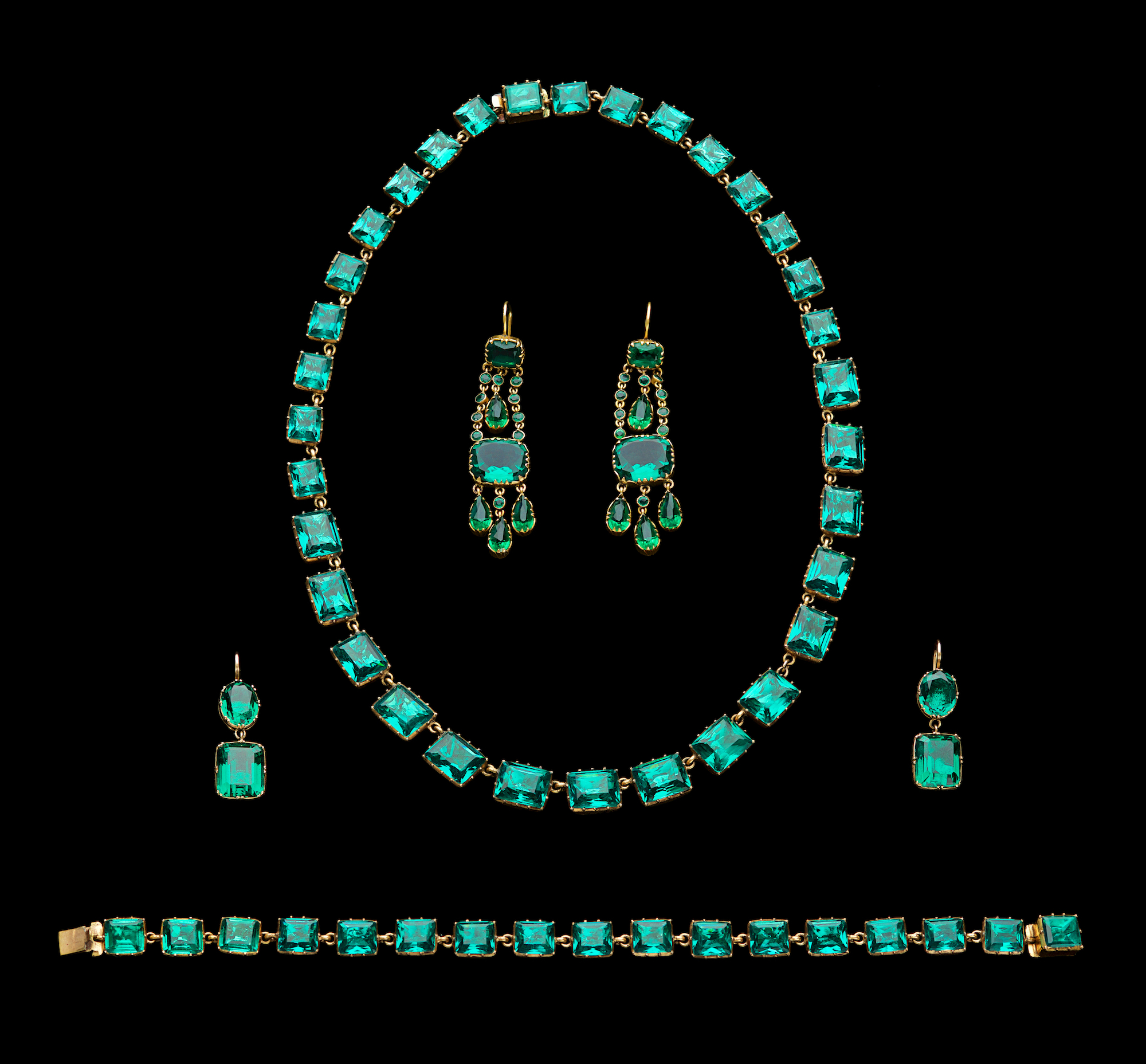
Above: Georgian emerald paste parure, close set in gold. English early 19th Century.
My interest in antique paste jewellery goes back to the 1980’s when I purchased a demi- parure set with foiled amethyst paste stones set in cut down gilt settings. I loved the simplicity of the design and the brilliance of the coloured stones.
It was an Englishman, George Ravenscroft, who is credited with introducing lead into his glass at the end of the 17th century, so that paste stones could be cut and faceted like gemstones, but it was a Frenchman, Georges Frederic Stras, who became famous in Paris around 1730-40 for his paste jewellery. He was appointed Jeweller to the King of France, Louis XV, in 1734 and soon Stras jewels were worn by all the fashionable women in Paris including the King’s mistress, Mme du Barry. The fashion quickly reached London where wonderful bright colours could be achieved in paste stones, similar to the colours of the finest emerald, ruby, sapphire, amethyst and aquamarine, when the actual gemstones were unavailable or too expensive.
All the best jewellers in Paris and London sold paste. The fine settings were in gold or in gilded metal so the beautifully mounted paste jewellery appealed not only to the middle classes but also to the wealthy, because it could be worn without fear of thieves. The design of this paste jewellery changed slightly from the mid 18th century when choker type necklaces were worn sometimes with lace, but towards the end of the century and into the 1820’s the design became more restrained – simple and well balanced.
In her Introduction to S.J. Phillips 2010 Exhibition of antique paste jewellery, Diana Scarisbrick mentions a scene in Oliver Goldsmith’s play “She stoops to Conquer (1773) where Mrs Hardcastle says “half the ladies of our acquaintance, my Lady Kill Daylight and Mrs Crump and the rest of them carry their jewels to town and bring nothing but pastes and marcasites “
We are fortunate today to be able to see and sometimes purchase examples of this fine original 18th and early 19th century paste jewellery – parures, necklaces, pendants, earrings, and bracelets, often carefully preserved in original cases. Had they been mounted with precious stones they may have been broken up and the gemstones set as single pieces – so lost to us forever.
Anna Wintour editor of Vogue magazine is often seen wearing several Georgian paste necklaces at once in different colours – although her favourite seems to be the aquamarine one – maybe it’s the real thing, not paste – but who knows ?

Recent Comments